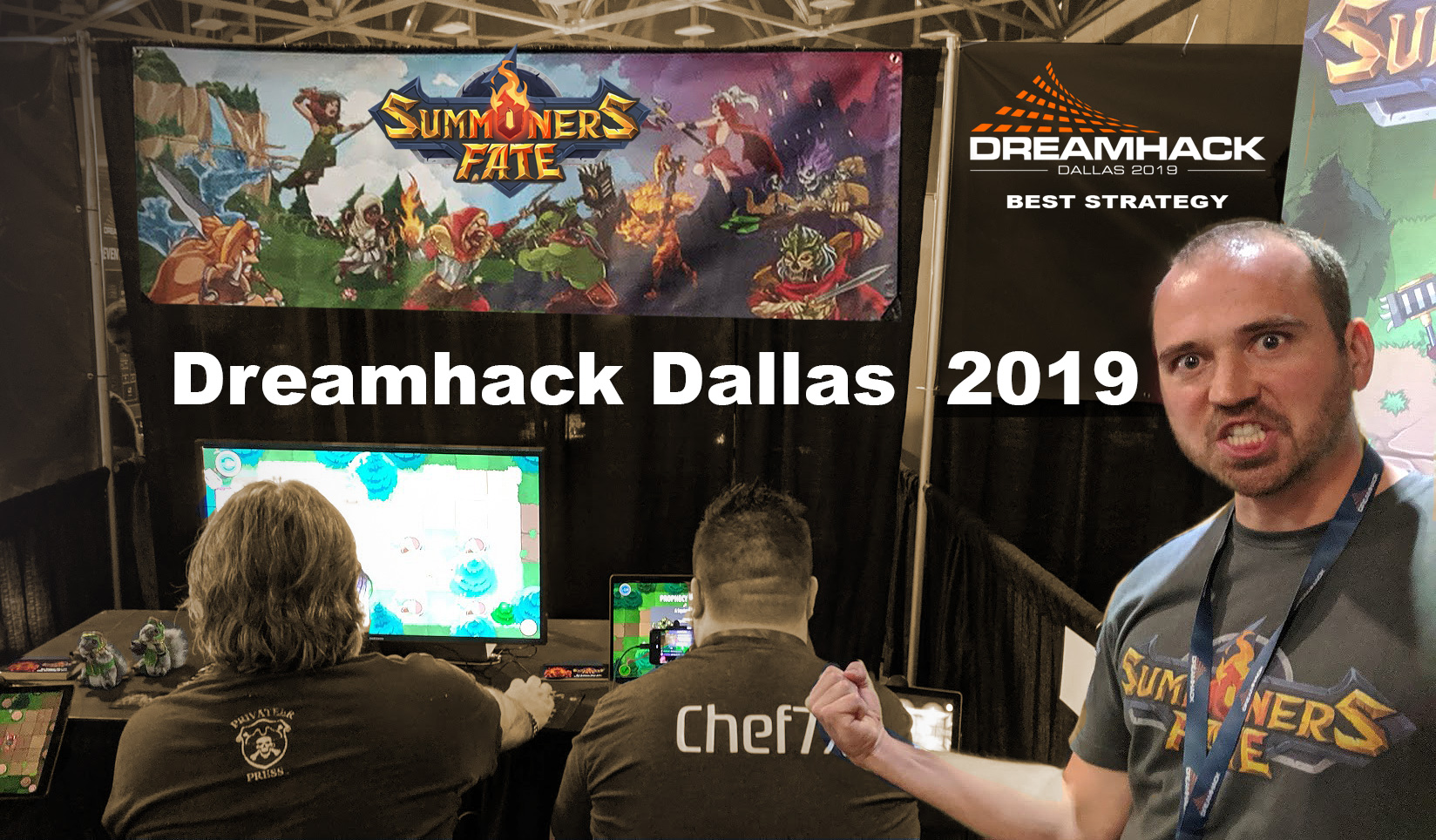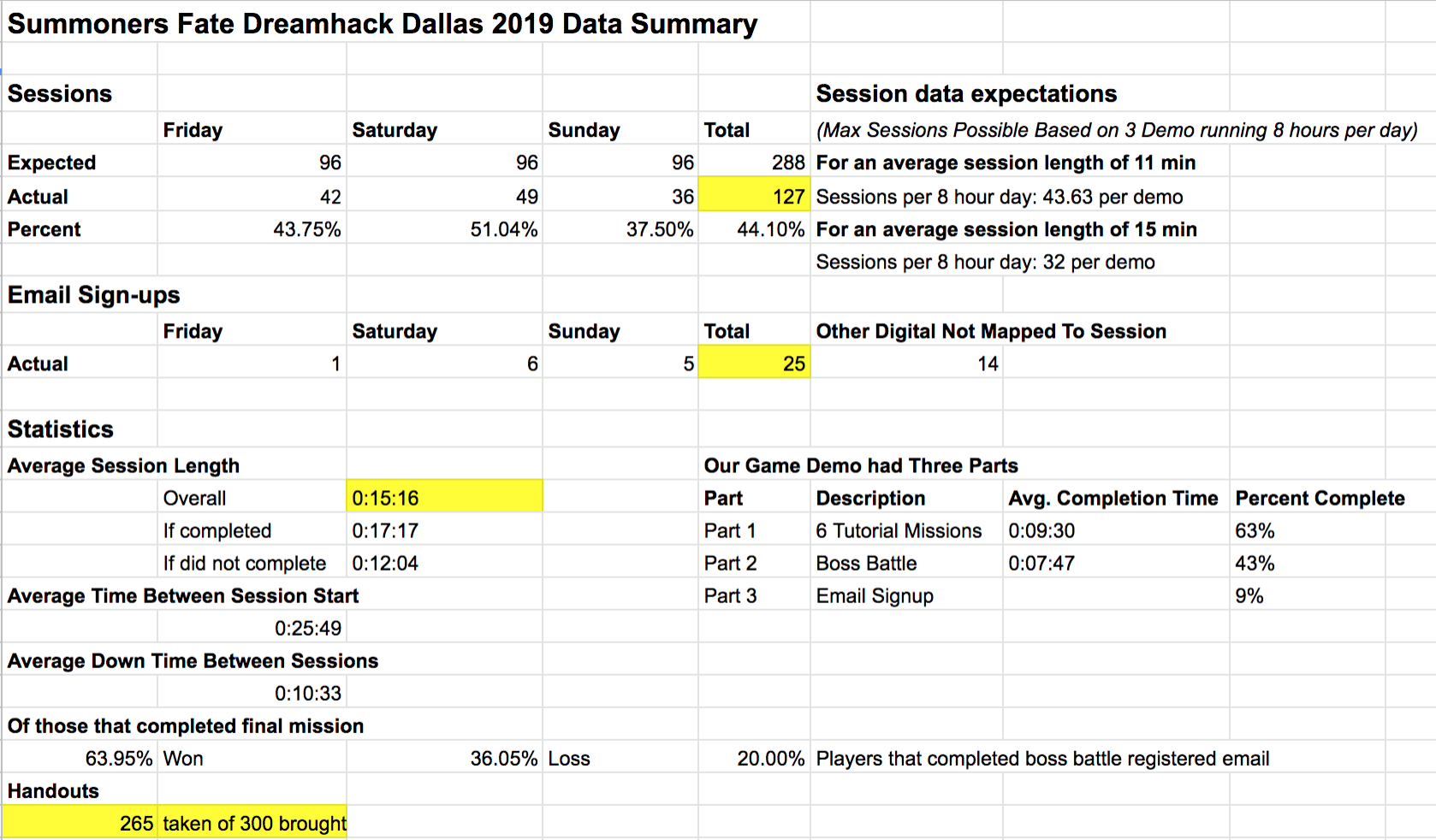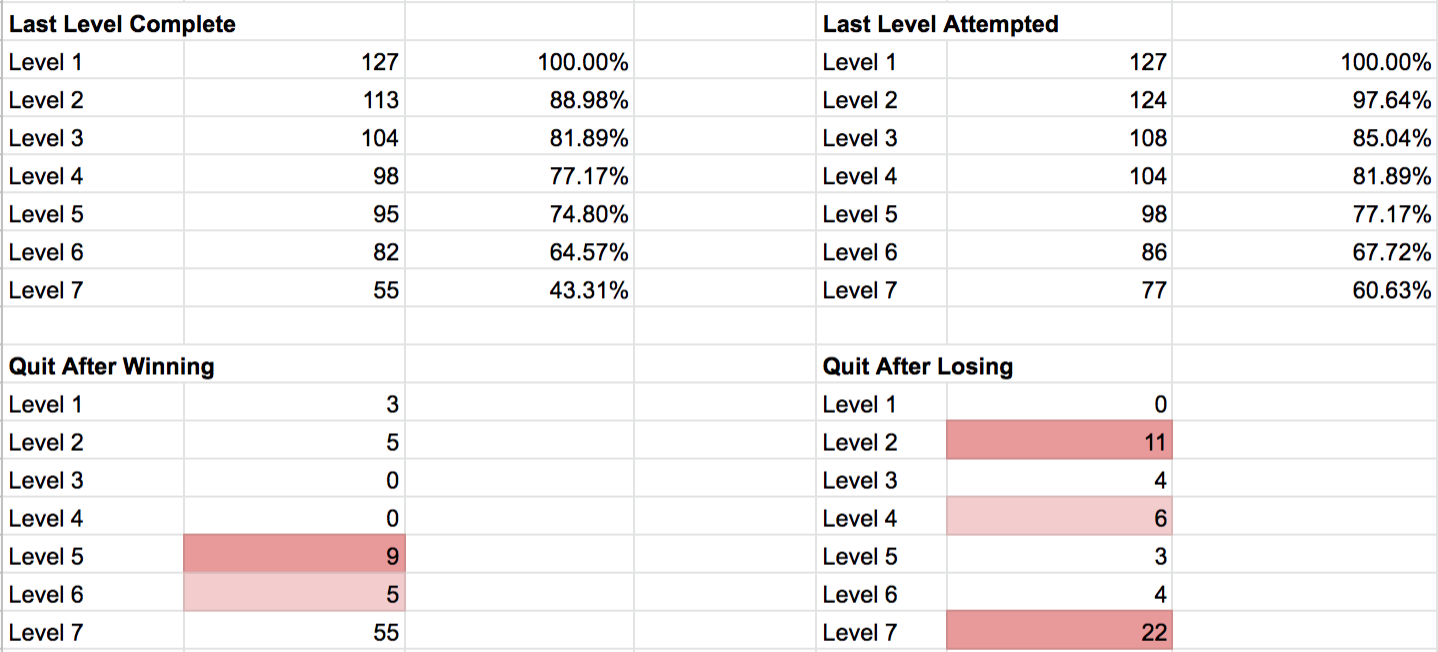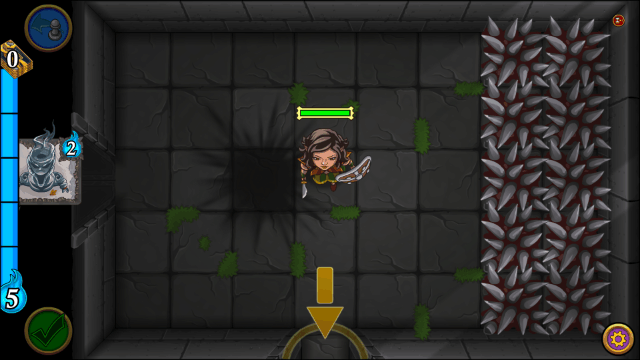
Featured Blog | This community-written post highlights the best of what the game industry has to offer. Read more like it on the Game Developer Blogs or learn how to Submit Your Own Blog Post
Originality and Choice: Design Insights We Learned at Dreamhack Dallas 2019
Here's an in-depth look at our budget, detailed session data, and our unexpected discovery of how originality and choice influence player perception that we learned showcasing Summoners Fate at Dreamhack Dallas 2019.

Originality and Choice: Design Insights We Learned at Dreamhack Dallas 2019

My teammate Peter and I recently returned from Dreamhack Dallas 2019 where we showcased our upcoming indie game, Summoners Fate, at a major event for the fourth time. Events like this are major learning opportunities that continue to help us improve both our marketing and game design (see here for data on our past events). What makes indie development so compelling to us is the comradery we share with our fellow devs. By being open and honest about our experiences with each other, we can all up our game and share in the success of what we learned. In that spirit, here's an in-depth look at our budget, detailed session data, and our unexpected discovery of how originality and choice influence player perception that we learned at Dreamhack Dallas 2019.
Our Budget
Dreamhack has an outstanding reputation for supporting indie devs that apply for the playground with a category award that includes a free 10x10 foot booth. This year, we were among those that received Best Strategy game. The only out-of-pocket cost required for the booth to showcase is power, which cost $150 at this event. So let's take a look at the other costs involved for travel and marketing:
Airfare (2 round trip tickets) $632.40
Hotel (2 queen beds for 4 nights) $589.60
Booth Power: $150.00
Food & Lyft Expenses $189.30
500 Marketing Post-Cards (double-sided) $83.01
Total: $1644.31
Since this is our fourth showcase, we already had booth essentials such as our vertical standing banner, horizontal hanging banner and equipment to showcase the game (laptops, tablets, cables, mounts, etc.). See our prior showcases for specific breakdowns on these costs (or roughly calculate between $100-$200 for banners depending on size and where you order from). It's important to note that Peter and I maximized our budget by traveling incredibly light. We brought our entire booth setup as carry-on luggage (that includes a 32" flat-screen monitor).
Our Session Data
We designed our game demo to run automatically and onboard users to the experience as well as provide a vertical slice of what's to come in later gameplay. The demo takes between 11 and 15 minutes to complete, divided roughly equal time between the onboarding missions and the final boss battle. Our demo tracks detailed session data so that we can determine precisely how much traffic we received at the booth, downtime between sessions, and specific insights on where/when players are dropping off in the demo. Here's a summary of the data we compiled:
 Notable callouts include:
Notable callouts include:
Total sessions (127) were comparable to Dreamhack Atlanta (142).
Our email sign-ups (25) were less than half Dreamhack Atlanta (61). I suspect the drop-off in email registers is due to the fact that we provided a new CTA (call-to-action) to purchase our prerelease, while in past shows, our CTA was to get informed about when the prerelease would be available. Keep in mind you're lucky to get a player to execute on a single CTA - choose wisely whether you want an email signup or a game sale.
Our hand-outs were more effective this year (265 vs 204). One of the observations I've made in the past is how almost everyone you hand a card to instinctively flips it over to see what is on the other side. Don't disappoint them. Make double-sided cards with a clear CTA on the back.
Dreamhack is lighter in foot-traffic compared to PAX East. We achieved more sessions at PAX East (149) in two days compared to three day period at Dreamhack (127). However, the lighter traffic gave us more opportunities to try out other indie games which turned out to be the largest benefit of our experience (see What We Learned About Our Game Design below).
Here's a summary of our gameplay funnel showing the percentage complete and where users are dropping off:
 Not surprisingly (since we did not alter the demo) our data is consistent with our PAX East demo:
Not surprisingly (since we did not alter the demo) our data is consistent with our PAX East demo:
We see drop-off happening on completion of levels 5 and 6. We believe this indicates that the demo is too long and that we need to eliminate a couple levels to reduce session length.
We see drop-off on losing level 2. This indicates a design problem where users are getting frustrated because the puzzle is too hard (Likewise, on Level 4).
The final mission varies in difficulty too much depending on how the AI's deck is shuffled. The issue here is that our email sign-up does not surface unless you win, so we are losing potential sign-ups with the mission being too hard.
Our Experience
"You do conventions to get fans, to get brand awareness and to standout. Trying to track direct ROI means you've already failed." - Alex Nichiporchik, CEO, TinyBuild
I agree with Alex and caution that data should inform how to grow and improve, not define the metrics of how successful your convention was. I measure our success by the vigor and excitement of the crowd and I highly recommend you do the same. We asked our players who played our game to tell us what they thought, and here's what they had to say:
Politely ask players after they've tried your game if they'd be willing to give a short response about their experience. Compile these together and you've got yourself evidence that the trip was worth it.
What We Learned About Our Game Design
One thing we did different at this expo was take more time to play other games created by fellow indie devs, and this turned out to have the greatest impact on our learning from the experience. Shout out to Fell Seal: Arbiter's Mask, Wildermyth, RoundGuard, Rogue Empire: Dungeon Crawler RPG and Bound by Blades for the opportunity to play your games and learn from you.
So what exactly did we learn? The games that excited us at Dreamhack were those that exhibited unique and original mechanics. The parts less exciting were those that felt derivative to other titles and implemented to satisfy perceptions of trends in the current market.
This gave us pause to question our own design - Why were we implementing systems like our saga-style map, and would players perceive these mechanics as original and exciting or derivative and out of place?
Branching saga maps are trending in the market, but we learned we aren't doing ourselves a favor standing out by making derivatives.
Our first breakthrough was questioning why we were using certain mechanics in the first place. When I thought about our over-arching saga map, I reasoned it was there to provide break points and present choices to players - but were these choices meaningful or rudimentary? How informed is the choice I make on the path I take, and what can I do if I don't like the outcome (especially if the outcome is an unfair challenge I cannot overcome)? The saga map also directly conflicts with one of the unique and compelling aspects of Summoners Fate - our ability to tie tactical grid levels together as a seamless world.
What if we cut our derivative features and put our focus on what makes us unique?
 We built an engine that supports seamless transitions between levels. Why aren't we doubling down on this?
We built an engine that supports seamless transitions between levels. Why aren't we doubling down on this?
Our second breakthrough was asking ourselves what underlying motivation as players made us feel the most compelled to move forward.
Making a choice was the most prominent factor - but, not just any choice. It has to be a meaningful choice. It has to be a fair and informed choice. The choice must contribute to sense of progression and development of the ultimate character destiny we aimed to play out in our fantasy. Once we realized our mistake and let go of it, other pieces of our design started falling into place and got us excited about how we can deliver on choice:
Provide Choices: The world is generated procedurally by placing tactical grid maps that connect together to form a continuous landscape. Key objectives such as treasures, new characters to recruit, and bosses to defeat are scattered throughout the world.
Make the outcome of choices mean something: We assume players desire to explore the entire world - but if they do, their choice on which path to take becomes less meaningful (since they are not choosing to lose something, simply the order in which to see everything). To give weight to player decisions, we add a survival modifier: The longer you explore the world, the more difficult enemies become until they ultimately overwhelm you
Learn from the consequences of choices: You get only one life and your resources (health, cards, number of rest points) are limited, so you have to make careful choices about where you want to explore. Make a wrong turn and stumble on a dragon? That's ok. Retreat and fall back, but remember that the longer you take to find the right path, the more imminent your defeat as the doomsday clock ticks down.
Design choices that contribute to progression of player's fantasy: Players progress their Summoner by over-coming challenges one room/area at a time. Upon completion, you make a choice about how to develop your character by picking a new card to add to your deck, choosing a new companion to join you, or resting to recover health or used cards.
In retrospect, these insights seem obvious, but it's easy to forget how clouded our judgment can become working in isolation from the creative input of others. I highly encourage setting aside time to play other games at conventions as a catalyst for creativity.
Our Key Takeaways
Exhibiting our game continues to empower us with new insights that we learn and grow from. Here are three takeaways to consider for your next expo:
Track your game demo data so you can learn and improve.
Take short videos (10 seconds or less) of player reactions to your game and compile them together.
Talk to other indie devs (particularly those with similar games) and play their demos. You'll recognize almost immediately where your own players are likely encountering frustration and experiencing the most joy.
Double down on what makes your game original. Avoid features derivative of other games not essential to supporting what makes your game unique.
Choice is a powerful motivator for players when the choice has consequence, the player can learn from their choices, and when the choices progress the fantasy the player is attempting to live out in your game.
Read more about:
Featured BlogsAbout the Author(s)
You May Also Like







.jpeg?width=700&auto=webp&quality=80&disable=upscale)








